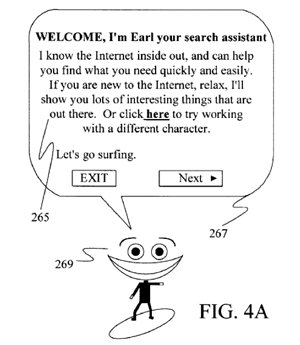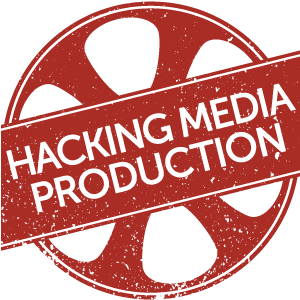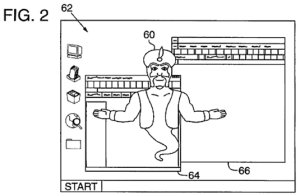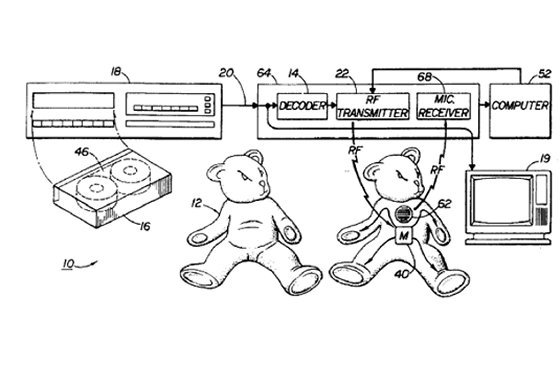Interview with TIME Magazine Editor at Large, Harry McCracken (Time: 21 min.).
Thanks for listening to our podcast. Please subscribe. If you’re already a regular subscriber, please write a review. If you know anyone who produces content for a living, please let them know about “Hacking Media Production.”
A few years back, before Harry McCracken (@HarryMcCracken) became TIME Magazine’s Editor at Large, he wrote a series of really popular tech history stories or slideshows for his tech site Technologizer. None of the information was new, but was unseen to his audience. The pieces he crafted were sourced from old information he found digging through Google Patents. Here’s a sampling of those stories:
- Patentmania: The Golden Age of Electronic Games
- The Santaland Patents
- Apple Patentmania: 31 Years of Big Ideas
- The Secret Origins of Clippy: Microsoft’s Bizarre Animated Character Patents
- Ten of Microsoft’s Ten Thousand Patents
- Mouse Trouble: 20 Weird Pointing Device Patents
- Twenty-One Peculiar Portables
I spoke with McCracken about how he uses the historical data in Google Patents to create new news. We spoke specifically about tech stories, but you could use Google Patents in a host of different areas.
Tips on Digging for Stories Within Google Patents
 It’s a treasure trove: Google Patents is a well done database of U.S. patents. It now includes some other countries as well. You can use the search engine to find the drawings and text of any patent.
It’s a treasure trove: Google Patents is a well done database of U.S. patents. It now includes some other countries as well. You can use the search engine to find the drawings and text of any patent.
News is something people don’t know: This is McCracken’s philosophy when looking for stories on Google Patents. Problem with breaking news is that everybody’s covering it and it’s hard to stand out and be unique. News doesn’t necessarily have to be new, it just has to be something people don’t know. And most people don’t know what’s hiding in Google Patents.
 Geeks love tech history: There’s plenty of technology history that people care about and don’t know about. It can be very powerful to uncover those historical tech nuggets.
Geeks love tech history: There’s plenty of technology history that people care about and don’t know about. It can be very powerful to uncover those historical tech nuggets.
Focus on the drawings: The patent information is usually really boring. McCracken never read all of the information on a single patent. He was really fascinated by the drawings. They can be a combination of weird, funny, and eye opening.
Look for the news hook: During the holidays McCracken looked for Christmas patents. Since Apple is always popular, he did Apple patents. Each patent collection focused around a theme such as computer mice, laptops, or even animated assistants.
Spend time with the tool: You have to spend time using the tool to get comfortable with it. For example, don’t just search “Microsoft” for Microsoft patents, because you’ll get all the Microsoft patents plus all the patents that reference Microsoft. Instead, go to the advanced search and specify the company.
Turn the content into slideshows: McCracken didn’t write long pieces from the information he found on Google Patents. Instead, he turned the pictures into slideshows with short captions. This allowed people to snack on the content like popcorn.
 Be interested in your search: “You can’t be interesting unless you’re interested,” noted McCracken. If you’re bored doing the search, you’re going to end up with boring content. Dig for something you really want to discover.
Be interested in your search: “You can’t be interesting unless you’re interested,” noted McCracken. If you’re bored doing the search, you’re going to end up with boring content. Dig for something you really want to discover.
Look back in time: Restrict the time period you want to look at patents. Old patents are generally more interesting than new patents.
Let one patent lead to the next: The trick is to find the one good patent. This will lead you to another because the good patents often reference each other.
 Don’t use today’s product names or categories: When the patents for laptops and notebooks were filed, they weren’t called by those names. They were called personal portable computers. One successful patent find will reveal the terminology they use for that category. Same true for product names. The patent for the Macintosh is not filed under “Macintosh.” Look at the patent copy to refine your search.
Don’t use today’s product names or categories: When the patents for laptops and notebooks were filed, they weren’t called by those names. They were called personal portable computers. One successful patent find will reveal the terminology they use for that category. Same true for product names. The patent for the Macintosh is not filed under “Macintosh.” Look at the patent copy to refine your search.
Patent Images from Google Patents are public domain: They were filed with a public service so we’re all allowed to use them, free of charge.
Other historical sources for tech: McCracken has found Google Books and the Internet Archive to be very valuable as they have computer magazines dating back to the 1970s.
Connect with Harry McCracken and “Hacking Media Production”
 McCracken can be found:
McCracken can be found:
- On Twitter @HarryMcCracken
- On Facebook where you can follow and read his collection of bad pitches.
- His articles on TIME Tech under the Technologizer brand.
 Thanks for supporting the show. Please subscribe to “Hacking Media Production” on iTunes, write a review, check out past episodes, and if you have any friends that make content for a living, please tell them to listen to the “Hacking Media Production” podcast. Thanks.
Thanks for supporting the show. Please subscribe to “Hacking Media Production” on iTunes, write a review, check out past episodes, and if you have any friends that make content for a living, please tell them to listen to the “Hacking Media Production” podcast. Thanks.




